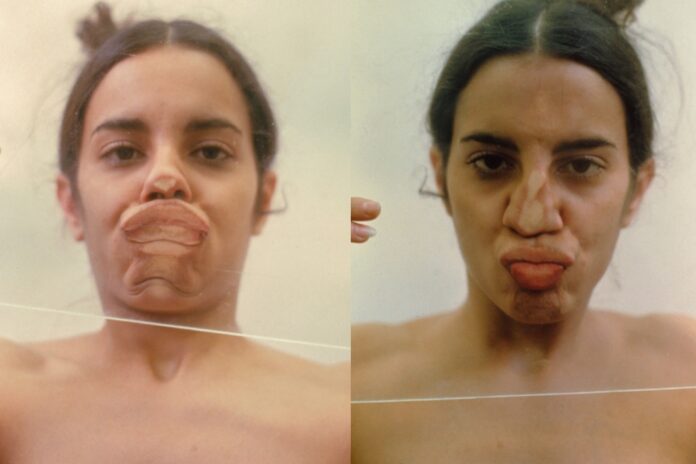Trailblazing Women in Performance Art: Breaking Boundaries and Redefining the Art Scene
Pioneering women in performance art, pushing boundaries and challenging norms through their bold and thought-provoking works. Their art explores themes of identity, gender, politics, and social commentary, leaving a lasting impact on the art world.
Performance art has long been a realm of innovation and provocation, challenging traditional artistic boundaries and engaging audiences in visceral and thought-provoking ways. While the movement boasts a rich history of influential figures, women’s contributions have often pushed the envelope the furthest, fearlessly exploring themes of identity, gender, politics, and social commentary.
Here, we celebrate some of the top-ranking female performance artists who have left an indelible mark on the art world:
- Marina Abramović: Often referred to as the “grandmother of performance art,” Abramović’s work tests the limits of physical and mental endurance, exploring the relationship between artist and audience. Her iconic performances, such as “The Artist is Present” and “Rhythm 0,” are renowned for their intensity and emotional impact.
- Yoko Ono: A conceptual and performance art pioneer, Ono’s work often challenges traditional notions of art and engages viewers in participatory experiences. Her “Cut Piece” performance, where she invited the audience to cut away her clothing, remains a powerful statement on vulnerability and empowerment.
- Carolee Schneemann: A feminist icon, Schneemann’s work often explored female sexuality and challenged societal norms. Her groundbreaking performance, “Interior Scroll,” where she unrolled a text from her vagina, is a testament to her bold and unapologetic approach.
- Shigeko Kubota: A key figure in the Fluxus movement, Kubota’s performances and installations often incorporated video and technology, pushing the boundaries of art and challenging its traditional forms.
- Adrian Piper: Known for her conceptual and performance-based works, Piper confronts issues of race, gender, and identity, often using her own body as a medium to provoke dialogue and challenge assumptions.
- Coco Fusco: Fusco’s performances and installations often address political and social issues, particularly those related to colonialism, globalization, and human rights. Her work challenges viewers to confront uncomfortable truths and question their complicity.
- Sylvie Fleury (Switzerland): A Swiss artist known for her playful and provocative critiques of consumerism and luxury culture, often using fashion and beauty products as artistic materials. Her work challenges traditional notions of femininity and the art market.
- Dora García (Spain): A Spanish artist who creates participatory performances and installations that blur the lines between fiction and reality. Her work often involves collaborations with the audience, exploring themes of identity, memory, and the construction of narratives.
- Mona Hatoum (Lebanon): A Palestinian artist whose powerful works explore themes of displacement, conflict, and the body. She uses a variety of media, including sculpture, installation, and video, to create evocative and often unsettling experiences.
- Rebecca Horn (Germany): A German artist renowned for her body extensions and kinetic sculptures that blend the mechanical and the organic. Her performances and installations often explore themes of vulnerability, transformation, and the human condition.
- Sanja Iveković (Croatia): A Croatian artist whose feminist performances and interventions challenge social and political norms. Her work often addresses issues of gender inequality, consumerism, and the legacy of communism in Eastern Europe.
- Joan Jonas (United States): A pioneer of video and performance art, Jonas creates immersive works that combine visual imagery, sound, and movement. Her performances often draw inspiration from mythology, folklore, and personal narratives, inviting viewers into dreamlike and symbolic landscapes.
- Kimsooja (South Korea): A South Korean artist known for her minimalist and contemplative installations and video works, often using fabrics, mirrors, and light to create immersive experiences. Her work explores themes of identity, migration, and the interconnectedness of humanity.
- Kapwani Kiwanga (Canada): A Canadian artist whose research-based practice explores histories of colonialism, science, and power structures. Her work often takes the form of installations, sculptures, and performances that challenge conventional narratives and reveal hidden truths.
- Eva Kot’átková (Czech Republic): A Czech artist who creates fantastical installations, sculptures, and performances that blur the lines between childhood and adulthood. Her work often addresses themes of memory, trauma, and the complexities of human experience.
- Yayoi Kusama (Japan): An iconic Japanese artist known for her immersive installations and paintings featuring vibrant polka dots. Her work, often autobiographical, explores themes of infinity, obsession, and the obliteration of the self.
- Teresa Margolles (Mexico): A Mexican artist whose powerful works address themes of violence, death, and social injustice. She often uses materials and objects associated with crime scenes and marginalized communities to create visceral and thought-provoking installations.
- Ana Mendieta (Cuba): A Cuban-American artist known for her powerful “earth-body” works and performances exploring themes of violence, identity, and belonging. Her art often involved merging her body with natural landscapes, leaving ephemeral traces.
- Otobong Nkanga (Belgium, Nigeria): A Nigerian-born artist based in Belgium, Nkanga creates multidisciplinary works that examine the complex relationship between humans, land, and resources. Her performances, installations, and drawings often explore themes of displacement, memory, and ecological concerns.
- Tabita Rezaire (France): A French new media artist whose work explores the intersections of technology, spirituality, and decolonization. Her digital videos and installations often challenge dominant narratives and promote healing through ancestral knowledge.
- Martha Rosler (United States): An American artist known for her feminist and politically engaged works that address social issues through photography, video, and performance. Her work critiques consumerism, war, and gender roles, often using humor and satire.
- Chiharu Shiota (Japan): A Japanese artist renowned for her large-scale installations using thread to create intricate webs and cocoons. Her work evokes themes of memory, dreams, and the interconnectedness of human experience.
These artists and countless others have used performance art as a platform for social change, self-expression, and artistic experimentation. They have shattered stereotypes, redefined the boundaries of art, and inspired generations of artists and activists.
The legacy of these trailblazing women in performance art continues to resonate today, reminding us of the power of art to challenge, inspire, and transform. Their fearless creativity and unwavering commitment to their vision have paved the way for a more inclusive and dynamic art world.




